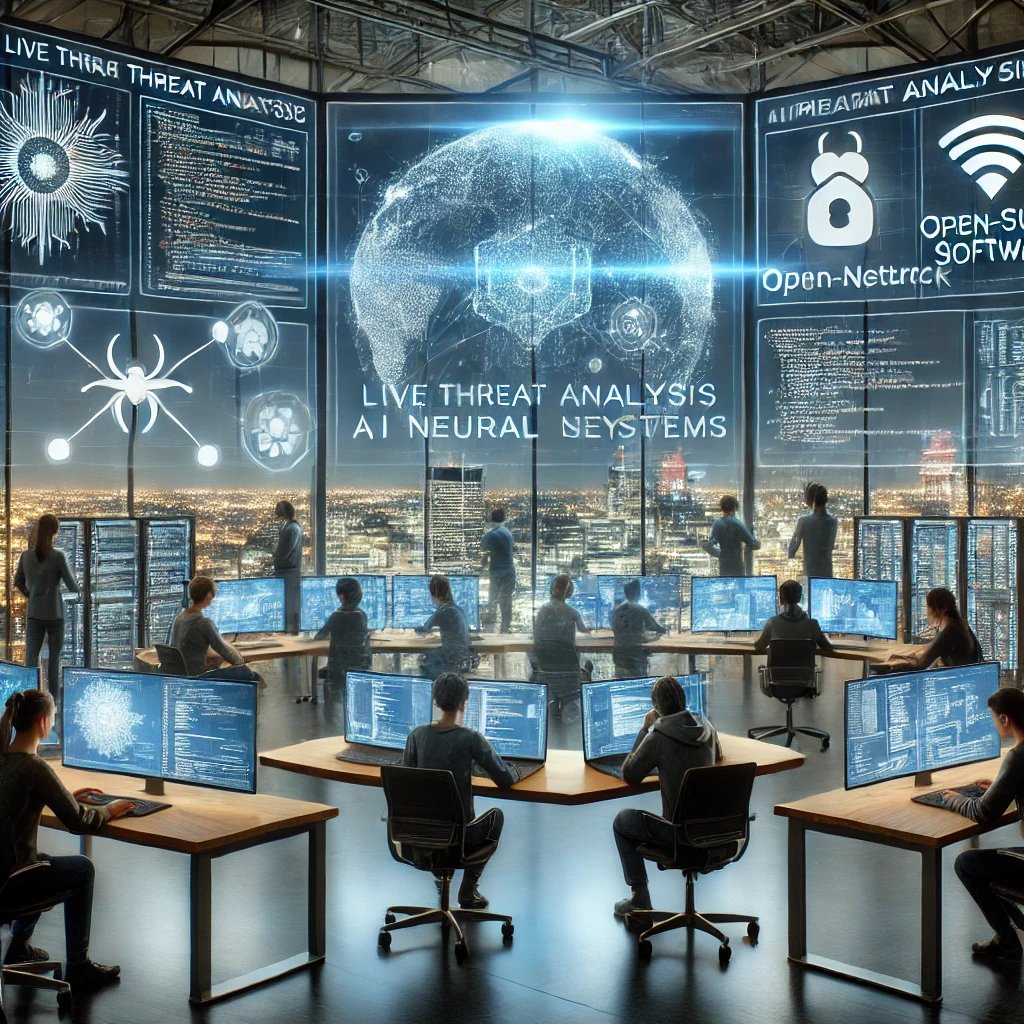The Top Cybersecurity Predictions for 2025: AI, Open Source, and Tackling the Signal Noise
As we approach the mid-2020s, the landscape of cybersecurity continues to evolve at an unprecedented pace. With increasing threats and vulnerabilities, organizations must adapt and innovate strategies that leverage cutting-edge technologies. This blog post explores the top cybersecurity predictions for 2025, focusing on the roles of artificial intelligence (AI), open-source tools, and the need to tackle signal noise.
1. The Rise of Artificial Intelligence in Cybersecurity
AI is no longer just a buzzword; it is becoming a fundamental component of cybersecurity strategies. By 2025, AI-driven solutions are anticipated to contribute significantly to the detection, prevention, and response to cyber threats.
Threat Detection: AI algorithms can analyze vast amounts of data in real-time to identify unusual patterns that may indicate a security breach. According to a report from Gartner, organizations that implement AI-driven security solutions drastically reduce response times and improve threat detection accuracy.
Automated Response: Automated systems powered by AI can respond to incidents instantly, minimizing damage and reducing recovery time. Automation will become essential in mitigating the impact of cyberattacks, allowing security teams to focus on more complex issues that require human intervention.
Predictive Analytics: By utilizing machine learning techniques, AI systems can predict potential vulnerabilities and attacks, enabling organizations to proactively fortify their defenses. This proactive approach will be crucial in maintaining security in an ever-evolving threat landscape.
2. Open Source Tools Will Gain Traction
As organizations seek cost-effective solutions in cybersecurity, the use of open-source tools is expected to surge. Open-source resources provide flexibility, community support, and collaboration, allowing organizations to tailor security tools to their specific needs.
Community-Driven Development: Open-source projects benefit from contributions from a global community of developers, leading to quicker identification of vulnerabilities and faster updates. This collaborative environment fosters innovation and enhances security measures.
Cost Efficiency: For many businesses, especially small and medium-sized enterprises, the affordability of open-source tools is appealing. By leveraging these tools, organizations can strengthen their security posture without incurring exorbitant costs. According to a study by Forrester Research, open-source tools can reduce costs significantly while maintaining high-security standards.
Interoperability: Open-source solutions are often designed to integrate seamlessly with existing systems, allowing for a more cohesive security strategy. This interoperability is essential for organizations that utilize a mix of legacy systems and modern technologies.
3. The Need to Tackle Signal Noise
With a growing number of alerts and warnings generated by security systems, the issue of signal noise becomes increasingly problematic. By 2025, organizations will need to focus on reducing the volume of false positives and irrelevant alerts that can overwhelm security teams.
Enhanced Filtering: Utilizing advanced analytics and machine learning, organizations can implement sophisticated filtering techniques that can distinguish between genuine threats and benign activities. This will help security teams prioritize their responses and allocate resources more efficiently.
Human-Centric Approach: Companies will need to invest in training their security staff to better interpret alerts and understand the context behind them. By fostering a culture that values critical thinking and analysis, organizations can enhance their threat response capabilities.
Consolidation of Tools: Organizations may also find value in consolidating their security tools into a more unified platform. This consolidation can help streamline operations and reduce the noise created by multiple systems. A report by Cybersecurity Insiders highlights that organizations utilizing consolidated security platforms experience improved efficiency and better detection rates.
4. The Growing Importance of Cybersecurity Regulations
As cyber threats continue to evolve, regulatory frameworks surrounding cybersecurity are expected to tighten. Organizations will need to stay ahead of compliance requirements to avoid penalties and reputational damage.
Data Protection Regulations: Compliance with data protection regulations such as the General Data Protection Regulation (GDPR) and the California Consumer Privacy Act (CCPA) will be mandatory for all organizations handling sensitive information. The [International Association of Privacy Professionals IAPP provides essential resources for companies looking to navigate these complex regulations.
Industry-Specific Standards: Different industries will see the emergence of tailored cybersecurity standards, particularly in sectors such as finance and healthcare. Organizations must be aware of these specific requirements to ensure compliance and maintain customer trust.
Regular Audits and Assessments: To remain compliant, organizations will need to conduct regular audits and assessments of their cybersecurity practices. This proactive approach will help identify gaps and ensure that security measures are up to date.
5. Cybersecurity Workforce Development
With the demand for cybersecurity professionals outpacing supply, workforce development will be a critical focus in the coming years. By 2025, organizations will need to prioritize attracting and retaining talent in the cybersecurity field.
Educational Initiatives: Collaborations between educational institutions and industries will be vital in developing the next generation of cybersecurity experts. Programs that provide hands-on experience and real-world applications will help bridge the skills gap.
Continuous Learning Opportunities: As cyber threats evolve, ongoing education and training for existing staff will be crucial. Organizations should invest in continuous learning opportunities to keep their teams informed of the latest trends and technologies.
Diversity and Inclusion: Promoting diversity and inclusion within the cybersecurity workforce will lead to a broader array of perspectives and problem-solving approaches. Initiatives aimed at attracting underrepresented groups will be essential in cultivating a skilled and diverse talent pool.
Conclusion
As we look ahead to 2025, the cybersecurity landscape will be shaped by advancements in AI, the adoption of open-source tools, and the pressing need to address signal noise. By focusing on these predictions and trends, organizations can position themselves for success in an increasingly complex digital world. The importance of regulatory compliance and workforce development cannot be understated, as they will play a fundamental role in fortifying defenses against emerging cyber threats.
By staying informed and proactive, organizations will be better equipped to navigate the challenges that lie ahead in the realm of cybersecurity.



